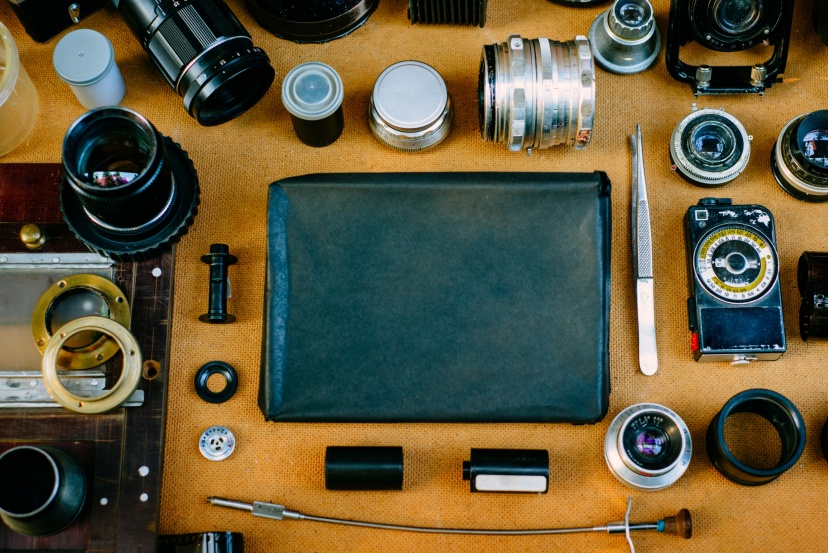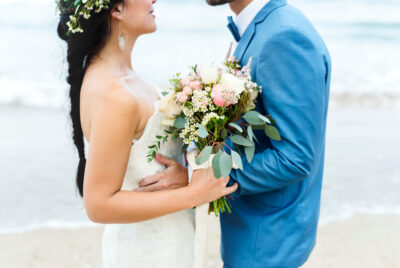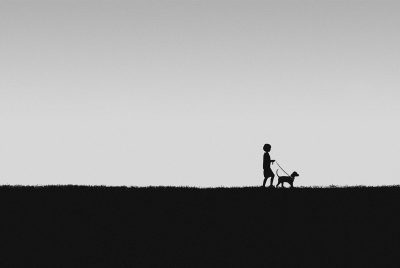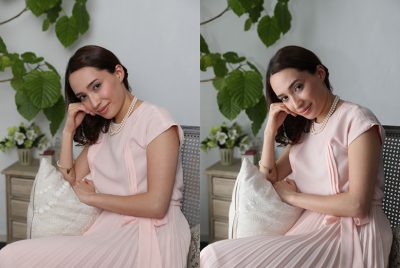Top 10 Essential Accessories Every Photographer Should Own
I’ve shot in freezing cold, tropical downpours, dusty trails, and crowded urban alleys—and over the years I’ve realized that while your camera and lenses are your tools, accessories are the unsung heroes that make shooting easier, faster, and more fun. In this guide, I’ll walk you through must-have accessories that make shooting easier, faster, and more fun, explaining how I use them, what to look for, and why they’ll save your skin (and your sanity) on the job.
Why Accessories Matter (Beyond the Camera & Lens)
Think of your camera body and lens as the engine and wheels of a car. Accessories are the fuel, the suspension, the windshield wipers—all the support systems that let you drive (shoot) under real conditions. Without the right support gear, even a top camera can struggle when light fades, weather shifts, or you need a creative trick.
Accessories also let you solve problems on the fly. Low light? You have an external flash or tripod. Glare? You have a polarizer. Power dying? You’ve got extra batteries. The more prepared you are, the more creative and stress-free your shoots become.
>>> TODAY’s DSLR camera deals CLICK HERE <<<
How I Choose My Must-Haves
I choose based on three criteria:
-
Reliability — It has to work when I need it.
-
Lightweight / Portable — I don’t want my accessories to weigh more than my camera.
-
Multipurpose Use — The more roles one item can play, the more value it gives.
With that in mind, here are my top 10 accessories I rarely leave home without.
#1 Sturdy Tripod & Head Combo
Why stability is nonnegotiable
Even with image stabilization, handholding fails under low light, long exposures, or careful composition. A tripod is your anchor—whether for portraits, landscapes, or time exposures. It gives you consistency so you can focus on framing and light rather than fighting camera shake.
Choosing between ball head, geared head, or pan/tilt
-
Ball heads are fast and intuitive—great for dynamic shooting.
-
Geared heads (or three-way heads) give precision and micro-adjustments—ideal for architecture, portraits, or panorama stitching.
-
Pan/tilt heads are somewhere in between—they give separate axes control.
I often carry a mid-weight tripod with a ball head for speed but will swap in a geared head when I want more control.
#2 Extra Batteries & Battery Grip
Power backup for long shoots
Nothing kills momentum faster than running out of juice mid-shoot. I always carry at least one spare battery, and for long sessions (weddings, time-lapses) I bring two. Also, I keep one battery charging while shooting with the other.
Pros & cons of battery grips
Battery grips let you stack extra batteries (doubling runtime) and offer vertical grip ergonomics. The trade-off: added weight and bulk. For many portraits or event shoots, I use a grip. For travel or minimal setups, I leave it behind.
#3 Quality Memory Cards & Redundancy
Speed, reliability, and backup workflow
A slow card can bottleneck your burst shooting; a bad card can wipe your work. Invest in UHS-II or V90 cards (or equivalent fast types for your system). Also, match cards to your camera’s rating (don’t overpay if your camera doesn’t support full speed).
Use dual slots or card backups
If your camera supports dual card slots, use one as the primary and the second as a backup mirror. If not, after each shoot, copy files to a backup drive or cloud immediately. Always plan on “what if a card fails?”
#4 Remote Shutter / Intervalometer
Reducing shake and triggering from distance
Pressing the shutter button can impart tiny shakes. A remote trigger (wired, IR, Bluetooth) lets you fire the shutter without touching the camera—great for long exposures, macro work, or self-portraits.
Using intervalometers for timelapses & long exposures
An intervalometer adds powerful features: timed exposures, sequences, delays. Want to do star trails or a sunrise timelapse? This tool becomes indispensable.
#5 Filters (UV, ND, Polarizer)
How filters change your creative options
-
UV / clear protective filters protect the lens front without altering image (some use them, some skip).
-
ND filters let you use slow shutter speeds in daylight (smooth water, motion blur).
-
Variable ND filters allow adjustable stops—handy but may degrade optical quality.
-
Polarizing filters (CPL) reduce reflections, deepen skies, and enhance contrast.
Which filters to start with
Start with a circular polarizer and a 3–6 stop ND. As you grow, pick up stronger NDs (10-stop) or graduated ND for skies.
>>> TODAY’s DSLR camera deals CLICK HERE <<<
#6 Good Camera Bag or Pack
Balance protection, access & comfort
Your gear’s safety depends heavily on the bag. Look for padding, weather resistance, and compartments that let you organize without digging. A bag that’s too tight or awkward to carry will slow you down.
Bag layout tips & modular inserts
Use modular dividers so your setup adapts to different shoots. Keep cleaning kit, batteries, filters, cables in dedicated pouches. Also, pack heavier items close to your back for better balance.
#7 Lens Cleaning Kit & Sensor Blower
Keeping optics clean in the field
Dust, fingerprints, and moisture happen. A compact cleaning kit (microfiber cloths, lens pen, cleaning fluid) and a blower / rocket air lets you deal with surface dust on the go. Clean your front and rear elements each time you switch lenses.
Safe sensor cleaning practices
Never use compressed spray on a sensor. Use a blower first, then sensor swabs or wet cleaning only if needed—and preferably in low light. If unsure, leave the sensor cleaning to professionals.
#8 External Flash / Speedlight & Modifiers
Why on-camera or off-camera flash matters
Ambient light is great—until it’s not. An external flash lets you fill shadows, freeze motion, or overpower harsh daylight. Off-camera setups open creative direction: side light, rim light, etc.
Use of diffusers, bounce, gels
Softboxes, bounce boards, diffusion umbrellas, and color gels let you shape, soften, or color the light. Even small modifiers improve your results dramatically compared to bare flash.
#9 Reflectors, Diffusers & Light Shapers
Softening or redirecting light
Reflectors fill shadows; diffusers soften harsh light; scrims cut brightness; grids or flags shape direction. These tools let you sculpt natural light without dragging heavy equipment.
DIY vs pro options
You can start with collapsible reflectors or bounce cards (5-in-1 types). As you grow, stiff reflector frames, light stands, and cloth scrims become helpful. Always carry one white and one silver side for flexibility.
#10 Strap, Harness & Grip Accessories
Ergonomics and comfort in long shoots
Carrying a camera all day demands comfort. A good strap, sling harness, or chest mount system helps distribute weight. Some also allow quick transitions between body and hanging positions.
Quick-release straps, anchor systems, hand grips
Anchor-style straps (e.g., Peak Design anchors) let you detach camera fast. Hand grips or mini plates give better handling in one-handed or vertical shooting. For me, my strap is part of my workflow—not an afterthought.
Honorable Mentions & Extras
Tethering cables, laptop, backup drives
In studio or event shoots, tethering to a laptop helps review and control. Always bring portable SSDs or external drives for backup.
Rain covers, rain sleeves, gaffer tape
Weather happens. A rain cover or a shower cap plus gaffer tape can save gear in wet conditions. Duct tape or gaffer is your quick fix for gear emergencies.
My Ideal Kit Setup & How I Pack It
Here’s how I pack for a “do-anything” shoot:
-
Camera body + two lenses
-
Tripod with ball head
-
Flash + small softbox
-
Spare battery + grip
-
2 fast memory cards
-
Remote shutter / intervalometer
-
Circular polarizer + ND filter
-
Cleaning kit + blower
-
Reflector / diffuser
-
Strap + anchor
-
Rain cover + gaffer tape
-
Tether cable & SSD
I pack heavier stuff (tripod, flash) toward the back, lighter accessories in front pockets. I keep essential items (battery, cards, lens cap) in easily accessible pouches so I don’t fumble mid-shot.
Conclusion
Your camera and lenses get you through the basics—but the right accessories turn a “good shoot” into a stress-free, creative adventure. These must-have accessories that make shooting easier, faster, and more fun have saved me from missed moments, blurred shots, and drained batteries. Start with the basics (tripod, batteries, memory cards), then layer in filters, reflectors, and ergonomic gear as you grow. Over time your kit becomes an extension of your creativity, letting you focus on the shot—not the setup.
>>> TODAY’s DSLR camera deals CLICK HERE <<<
FAQs
1. How many accessories should a beginner invest in first?
Start with 2–3 essentials: tripod + spare battery + quality memory card. Once those feel comfortable in your workflow, add filters or flash.
2. Do I really need both a tripod and flash?
Yes—each solves different problems. Tripod helps with long exposures, stability; flash helps with lighting control, fill & creative direction. They complement each other.
3. Are expensive filters or cheaper “kit filters” good enough?
Lower-cost filters can have optical flaws (color cast, softness). Invest in good ones, especially for ND and CPL—they directly affect image quality.
4. How many spare batteries should I carry?
At least one spare. For long jobs, carry two or three. Your battery life depends heavily on temperature, power draw (e.g. LCD, autofocus), and usage.
5. Which accessory saves you most from a “ruined shot”?
In my experience, a sturdy tripod and a remote shutter save more “ruined shots” than almost anything else. They eliminate shake in low light, enabling sharp exposures you can’t handhold.




